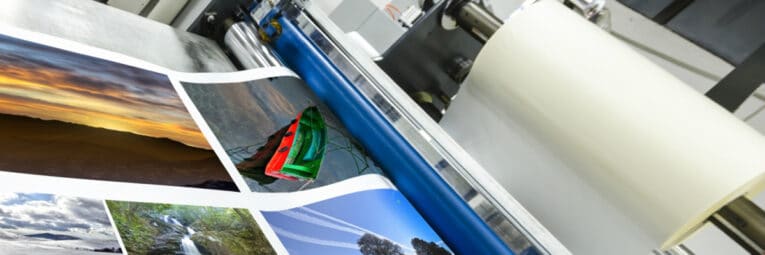
- Home
- All Posts
- Unwinding Technology
- Converting Machine Solutions
Blog

Converting Machine Solutions
Converting machine provide solutions that help customers reach their converting aims. In converting industry, some conversions are often required to modify or combine raw materials including paper, foams, silicone, adhesive tapes, non woven, rubbers, and other flexible packing materials. The raw materials may be produced in forms of long sheets or bulk rolls, can be converted into smaller intermediate form or final products such as packing bags, books, labels, etc.
Types of converting machines
Converting machines are used for web processing for continuous rolls of web materials. Typical converting machinery mainly include slitting rewinding machines, sheeting machines, coating machines, laminating machines, printing machines, bag machines, etc.
Slitter rewinders can efficiently convert a broad range of web materials from wide master rolls to narrow finished rolls. The slitting machines cut it in desired width accurately according to requirements, and commonly combine slitting methods with winding modes. Sheeting machinery is used in converting rolls into sheets with specific lengths and widths, some sheeters can also come with additional equipment for stacking.
Web coating equipment can be divided into gravure coating equipment, paper coating equipment, hot melt coating equipment, etc. Coat the surface of web materials with a thin coating of ink or adhesive materials. Just like coating machine, roll laminating machinery is widely used in flexible packaging industry to join together different webs to produce a single web composed of a multi-layer structure for vairuos purpose of application.
Printing machinery is common used in converting industry. The popular techniques are flexo printing and gravure printing, both of print processes are proper for roll-to-roll web processing applications such as plastic film, paper, foil, textile, etc. Bag equipment is a converter that produce a wide range of packaging products. This converting equipment can take a web of film, cut it into desired lengths and width, seal their edges by some plastic materials, and finally convert it into plastic bag.
Converting solutions for plastic film & foil
The convertion process for plastic film starts with small plastic particles which are converted to a melt and become molten and pliable. Then molten plastic extruded through a circular die to form a continuous plastic bubble with hollow tube shape. The tubular bubble can be inflated with air to desired diameter and then moves through a cage as it cools. The film thickness can be adjusted by changing speed at which it is pulled from the die, the film width can be also controlled by changing the amount of air inserted in the bubble. After flatten and collapsed, the plastic film is then transported by rollers for further convertion process such as printing, metallization, lamination, cutting, welding, etc, and is eventually wound into rolls.
Foil converting solutions have greatly developped together with growth of flexible packing industry, functional structure through laminating and coating process can affect the properties of the final product. Foil laminating is a converting process that bonds a metal foil(i.e. Aluminum foil laminate, Copper foil laminate, Stainless steel foil laminate) to another material. Aluminum foil goes through an adhesive coating step, most common adhesive coating method includes hot melt coating, gravure coating, extrusion coating. Then another fuctional material bonds to the coated Aluminum foil to creat a foil laminate with unique functions such as barrier, anti-corrosion, heat resistance, conductivity, etc.
Converting solutions for paper industry
Paper converting is a process used to turn raw paper material into other products including boxes, cups, containers, labels, newspapers, bags and a full range of paper products. The complete paper conversion process turn raw paper material into finished products, raw fibers are gathered and melted into pulp, after continuous process including bleaching, straining, flattening and drying, in form of large rolls of paper. The master rolls of paper are processed in finished products with desired shape and size through conversion process such as cutting, sheeting, gluing, laminating, grooving, punching, printing, folding, etc.
Generally there are two most common paper cutting method via slitting rewinding machines and roll sawing machines, slitting rewinding method is to unwound rolled paper to pass through the slitter rewinder, and slit by one of a series of different cutting blades into strips of the varying widths, then rewinding the paper into sellable rolls. Roll sawing machines involve slitting and cutting the large rolls into smaller widths without unwinding and rewinding process. We must choose the right converting machine solutions that are fit for your applications.
About Lvjie
Serch
Recent Posts
-
Overview of UHMWPE Separato... September 20, 2024
-
Overview of PVC Slitter Rew... July 2, 2024
-
Overview of Pre-coated Film... April 25, 2024
-
Overview of stretch film sl... March 11, 2024
-
Application of BOPP Tape Sl... November 29, 2023
Categories
- All Posts (28)
- Others (1)
- Unwinding Technology (3)
- Rewinding Technology (7)
- Slitting System (18)
- Control System (4)
Contact Info

Xiongzhou Street, Liuhe District, Nanjing City, 211511, China
Phone: 86 025 86555699Email: info@film-slitter.com
Recent Posts
-
Overview of UHMWPE Separato... September 20, 2024
-
Overview of PVC Slitter Rew... July 2, 2024
-
Overview of Pre-coated Film... April 25, 2024
-
Overview of stretch film sl... March 11, 2024
-
Application of BOPP Tape Sl... November 29, 2023
